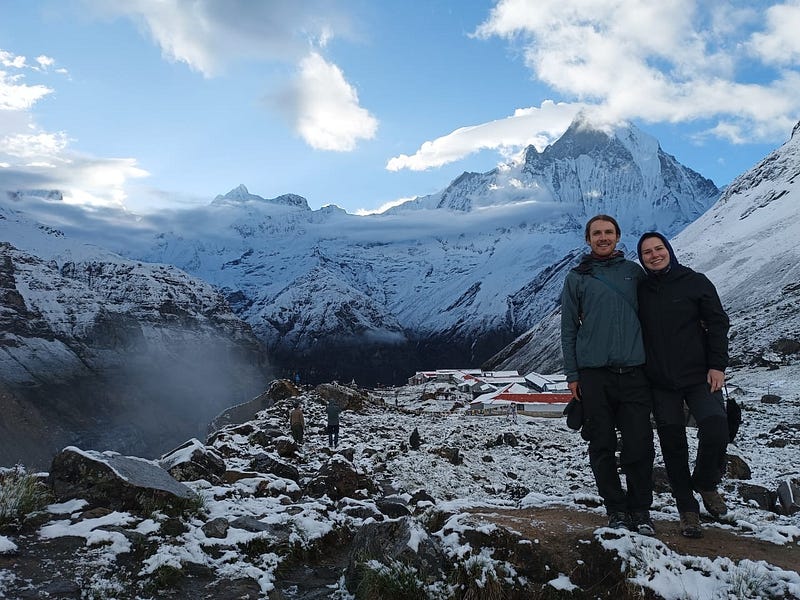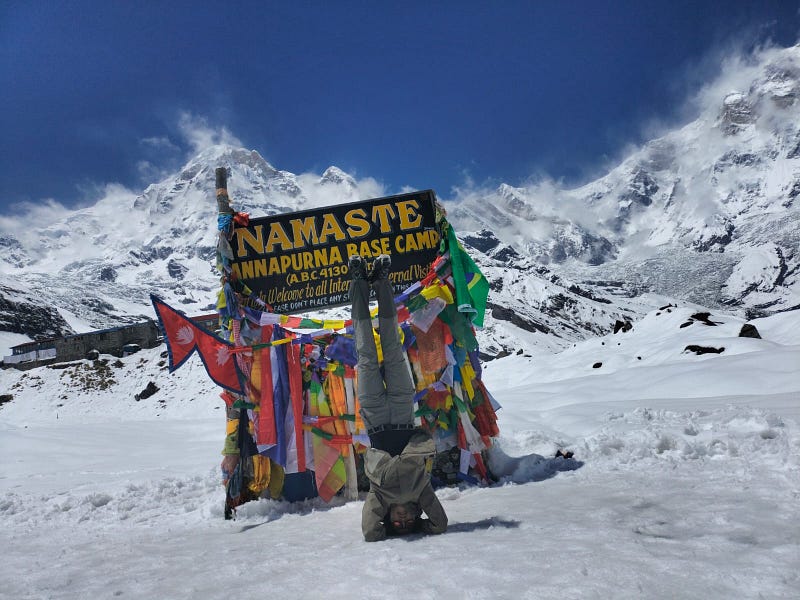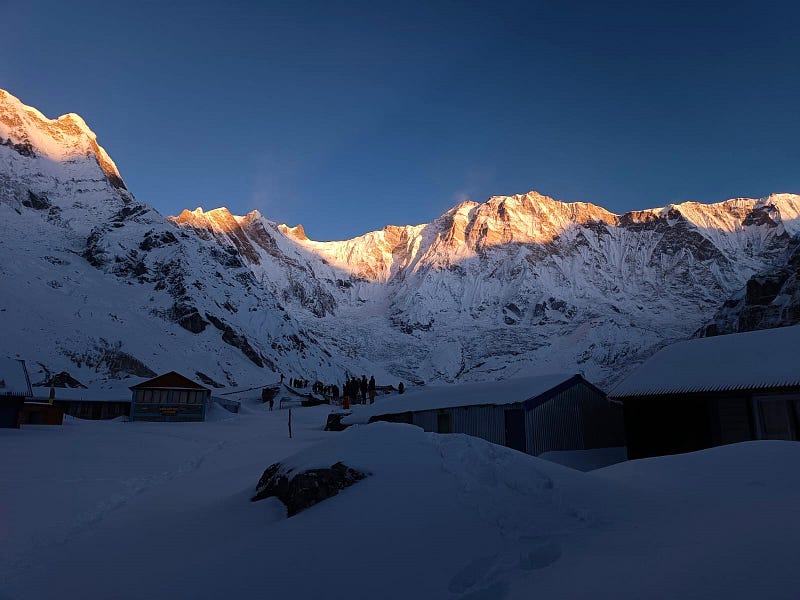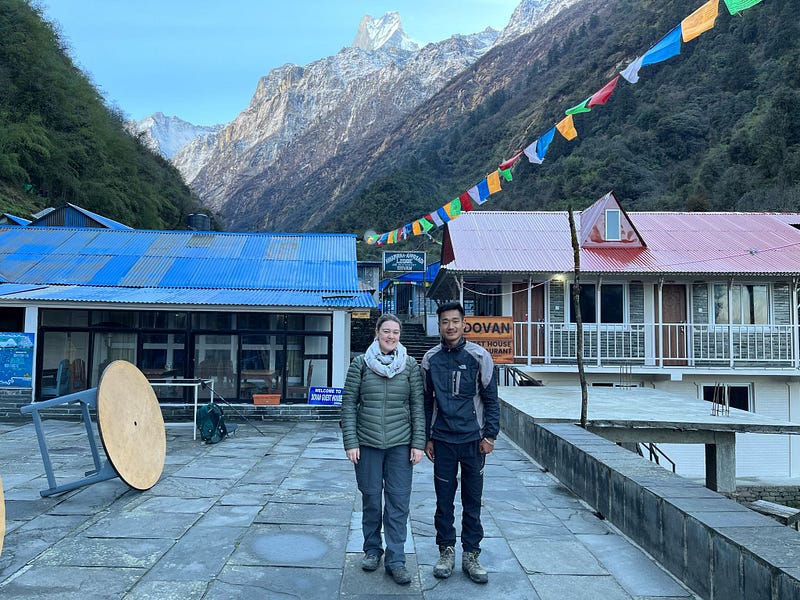
Introduction to Annapurna Base Camp Trek
Embarking on the Annapurna Base Camp (ABC) Trek is a dream for many adventurers seeking to experience the natural splendor of the Himalayas. This trek not only offers breathtaking views but also immerses you in the rich cultural tapestry of Nepal. As you plan this remarkable journey, understanding the costs associated with the trek is essential to ensure a memorable and stress-free experience.
The ABC Trek is renowned for its diverse landscapes, ranging from lush forests to high-altitude terrains. As you traverse these varying environments, each day presents a unique challenge and opportunity for discovery. Whether you’re gazing at the towering peaks or interacting with the welcoming locals, every moment on this trek is a testament to the allure of the Himalayas.
Preparation is key to a successful trek. By familiarizing yourself with the costs, logistics, and cultural nuances of the Annapurna region, you can maximize your enjoyment while minimizing unexpected expenses. This guide aims to provide a comprehensive analysis of what to expect financially and experientially on the ABC Trek.
Factors Influencing the Cost of the Annapurna Base Camp Trek
Several factors play a role in determining the overall cost of the Annapurna Base Camp Trek. Understanding these elements can help you budget effectively and make informed decisions during your journey.
- Seasonal Variations: Trekking costs can vary significantly depending on the time of year you choose to visit. Peak seasons, typically in spring and autumn, attract more trekkers, leading to higher prices for accommodation and services. Conversely, off-peak seasons might offer discounts but come with colder weather and less favorable trekking conditions.
- Trekking Style: Whether you opt for a guided trek or decide to go independently will influence your budget. Guided treks usually include permits, accommodations, meals, and a guide’s expertise. Independent trekkers have more flexibility but need to manage logistics and permits themselves, which can sometimes be more cost-effective.
- Duration of the Trek: The length of your trek will directly impact the overall cost. Longer treks require more days of accommodation, food, and other expenses. Planning your itinerary to match your budget and time constraints is crucial for a balanced experience.
Detailed Breakdown of ABC Trek Costs
To provide a clearer picture of the financial aspects involved, here’s a detailed breakdown of typical costs associated with the Annapurna Base Camp Trek:
Expense TypeEstimated Cost (USD)Permits$50 — $60Accommodation$5 — $20 per nightMeals$10 — $30 per dayGuides/Porters$25 — $30 per dayTransportation$20 — $50Miscellaneous$100 (souvenirs, tips, etc.)
- Permits: Trekkers need the Annapurna Conservation Area Permit (ACAP) and the Trekkers’ Information Management System (TIMS) card. These permits are mandatory and can be obtained in Kathmandu or Pokhara.
- Accommodation: Tea houses are the most common form of lodging along the trek. While basic, they provide necessary amenities such as hot meals and a warm bed. Prices vary based on location and facilities offered.
- Meals: Dining expenses can range widely depending on your preferences. Expect to pay more as you ascend, due to the logistical challenges of transporting food to higher altitudes.

Difficulty Level of the Annapurna Base Camp Trek
The Annapurna Base Camp with Poon Hill Trek is considered moderate in terms of difficulty, making it accessible for trekkers with a reasonable fitness level. However, there are several aspects to consider to ensure a successful trek.
The trail includes a variety of terrains, from flat paths to steep inclines. The ever-changing landscape requires stamina and perseverance. While the trek doesn’t require technical climbing skills, you should be prepared for long days of walking with a backpack.
Acclimatization is crucial due to the increasing altitude as you approach Annapurna Base Camp. Symptoms of altitude sickness can affect anyone, regardless of fitness level. It’s essential to ascend gradually, stay hydrated, and listen to your body to prevent any serious health issues.
Best Time to Trek to Annapurna Base Camp
Timing your trek is crucial for an optimal experience. The best times to embark on the 7 Days Annapurna Base Camp Trek are during the spring (March to May) and autumn (September to November) seasons.
Why Spring?
- Pleasant Weather: The temperatures are moderate, and the skies are usually clear, providing stunning views of the mountains.
- Flora and Fauna: Spring is the season of blooming rhododendrons, adding vibrant colors to the landscape.
Why Autumn?
- Stable Weather: Post-monsoon, the weather stabilizes, offering clear skies and moderate temperatures.
- Festive Season: Autumn coincides with major Nepali festivals, providing an opportunity to experience local culture.
While winter and monsoon treks are possible, they come with challenges such as cold temperatures and slippery trails, respectively. Careful planning and preparation are essential if trekking during these times.
Weather Conditions at Annapurna Base Camp
Weather conditions on the Annapurna Base Camp Trek can vary greatly depending on the season. Understanding these conditions will help you pack appropriately and prepare mentally for the journey.
- Spring (March-May): Expect mild temperatures during the day, with cooler nights. The weather is generally stable, making it ideal for trekking.
- Summer/Monsoon (June-August): High humidity and frequent rainfall characterize this season. Trails can be muddy and leeches are common, which might deter some trekkers.
- Autumn (September-November): Crisp, clear skies and moderate temperatures define this season. It’s perfect for photography and enjoying panoramic views.
- Winter (December-February): Expect cold conditions, especially at night. Snowfall is common at higher altitudes, which can add beauty and challenge to the trek.
Packing appropriately for these conditions is crucial. Layered clothing, waterproof gear, and warm sleeping bags are essential items to consider.
Cultural Experiences on the Annapurna Base Camp Trek
The 5 Days Annapurna Base Camp Trek is not just about the stunning landscapes; it’s also a cultural journey through the diverse communities of the Annapurna region. As you trek through villages, you’ll encounter ethnic groups such as the Gurung and Magar, known for their warm hospitality and rich traditions.
Villages like Ghandruk and Chhomrong provide insight into traditional lifestyles, offering opportunities to engage with locals and learn about their customs. Homestays or tea house accommodations often include cultural exchanges, such as traditional Nepali meals or folk dances.
Participating in local festivals can enhance your cultural experience. The autumn season, for instance, coincides with major festivals like Dashain and Tihar, allowing trekkers to witness and partake in vibrant celebrations. These experiences enrich the trek, providing deeper connections to the region.

Majestic Himalayan Mountains on the ABC Trek
One of the primary attractions of the Annapurna Base Camp Trek is the breathtaking views of the Himalayan Mountains. The trek offers several vantage points to admire these majestic peaks, each more awe-inspiring than the last.
- Annapurna South: Standing tall at 7,219 meters, this peak is a constant companion on the trek, visible from various points along the trail.
- Machapuchare (Fishtail Mountain): Known for its unique shape, Machapuchare is considered sacred and remains unclimbed. Its distinct silhouette is especially stunning when illuminated by the sunrise.
- Hiunchuli and Gangapurna: These peaks add to the dramatic skyline, providing a stunning backdrop for trekkers.
Photography enthusiasts will find endless opportunities to capture the beauty of these mountains. Sunrise and sunset views are particularly mesmerizing, casting a golden hue over the snow-capped peaks.
Essential Tips for Reducing Costs on the ABC Trek
Trekking can be an expensive endeavor, but with a few strategic decisions, you can make your Annapurna Base Camp experience more budget-friendly.
- Travel Off-Peak: Consider trekking during the shoulder seasons (late autumn or early spring) when prices for accommodation and services are generally lower.
- Negotiate Prices: In some villages, prices for accommodations and other services can be negotiated, especially if you plan on staying multiple nights or traveling in a group.
- Bring Your Own Gear: Renting or buying gear in Kathmandu or Pokhara can be cost-effective. However, bringing your own gear from home might save money, especially for items like sleeping bags and trekking poles.
- Limit Extra Expenses: While it’s tempting to indulge in hot showers and Wi-Fi access, these extras can add up. Limiting their use can help keep your expenses in check.
Packing Essentials for the Annapurna Base Camp Trek
Packing wisely is crucial for a successful trek. Here’s a checklist of essential items to bring on your journey to the Annapurna Base Camp:
- Clothing:
- Layered clothing (base, middle, and outer layers)
- Waterproof jacket and pants
- Thermal wear
- Hat, gloves, and scarf
- Footwear:
- Sturdy trekking boots
- Sandals or lightweight shoes for evenings
- Gear:
- Trekking poles
- Sleeping bag (rated for cold temperatures)
- Backpack (50–60 liters)
- Other Essentials:
- Water purification tablets or filter
- Sunscreen and sunglasses
- First aid kit and personal medications
- Headlamp with extra batteries

Having the right gear can make a significant difference in your trekking experience, ensuring comfort and safety throughout the journey.
Guided vs. Independent Trekking: Which is Better?
Choosing between a guided trek and an independent trek is a personal decision that depends on your preferences, experience, and budget.
Guided Trekking
Pros:
- Expertise: Guides provide valuable insights into the culture, geography, and history of the region.
- Convenience: All logistics, including permits, accommodations, and meals, are arranged for you.
- Safety: Guides are trained in first aid and can assist in emergencies.
Cons:
- Cost: Guided treks are generally more expensive due to the services provided.
Independent Trekking
Pros:
- Flexibility: You can set your own pace and itinerary.
- Budget-Friendly: Without guide fees, costs can be lower.
Cons:
- Logistics: You’ll need to arrange permits, accommodations, and other logistics yourself.
- Safety Concerns: Without a guide, the responsibility for navigation and dealing with emergencies falls entirely on you.
Ultimately, the choice depends on your confidence in navigating the terrain and managing logistics independently.
Conclusion
The Annapurna Base Camp Trek is a transformative journey, offering not only challenging adventure but also cultural enrichment and breathtaking natural beauty. By understanding the costs involved and preparing adequately, you can ensure a rewarding experience that fits your budget and preferences.
Whether you choose to trek independently or with a guide, the memories forged on this trail will last a lifetime. From the towering peaks of the Himalayas to the vibrant local cultures, every aspect of the trek contributes to a unique and unforgettable adventure.
No comments:
Post a Comment